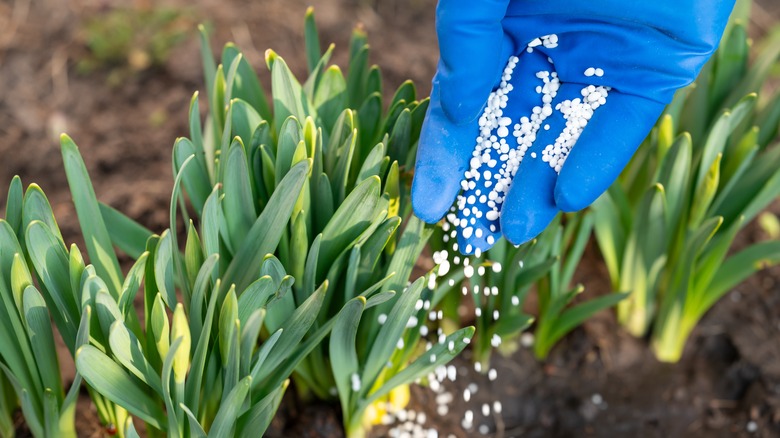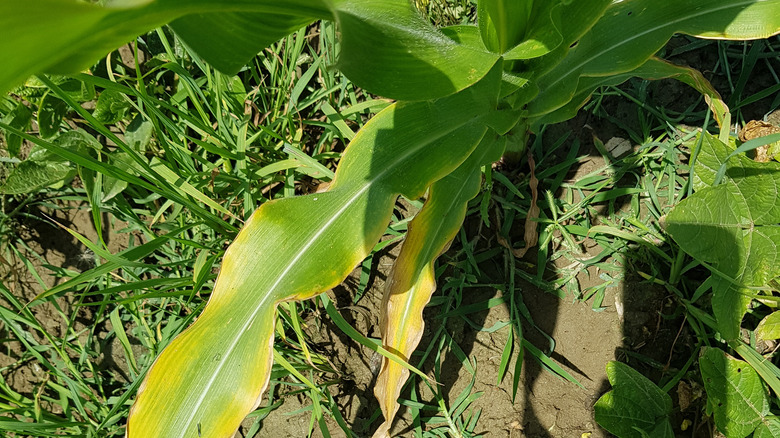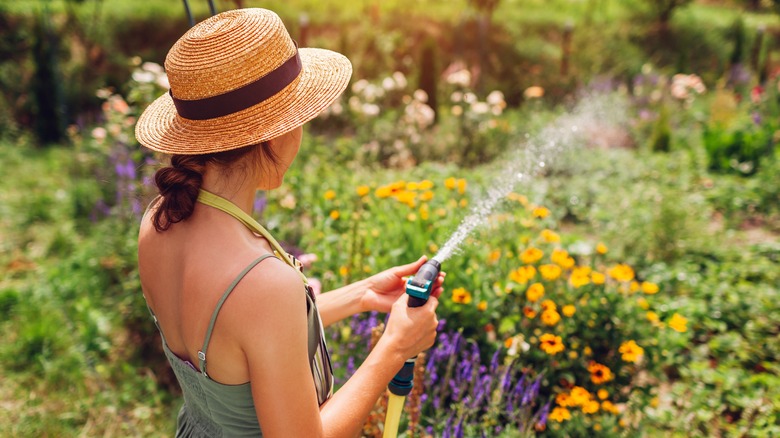Telltale Signs Your Plants Are Desperate For Potassium Fertilizer (& How To Use It)
Everyone wants their plants to grow and flourish, so it can be crushing when they begin to wither and fail to thrive. While there are a variety of reasons this can happen, including issues with watering, light levels, and heat, nutritional deficiencies are also a common culprit. While it can initially be difficult to tell what nutrients your plants are lacking, soil tests, combined with careful examination of the plant's growth, leaf shape and color, and overall health should help to clarify what your plant is lacking and how best to fix it. Some of the clearest signs your plant is suffering from a potassium deficiency include poor growth, wilting easily, pale yellow leaves, and leaves that are curled or puckered.
The three primary macronutrients plants need to thrive are nitrogen, phosphorus, and potassium. Those elements, in combination with micronutrients which plants need in far smaller amounts, are essential to plant health. Often, even if a plant is struggling from a nutritional deficiency, including a potassium deficiency, it's not due to a lack of the nutrient in the soil, but instead other factors like soil pH, compaction, and watering issues that are preventing the plant from taking in nutrients. Therefore, it's essential to test the health of your soil in addition to visually observing your plants when trying to diagnose and treat a nutritional deficiency.
Using potassium fertilizer
If a visual examination of your plants suggests they are struggling with a lack of potassium and a soil test confirms there is in fact a lack of potassium in the soil, then fertilizing is your best option. This is most common for plants grown in containers or raised beds and those grown in sandy soils. A slow-release fertilizer such as potassium silicate is generally the best option. If you are using an NPK fertilizer to keep your plants healthy, remember that the third number refers to potassium (technically potash, which is a compound of potassium and oxygen) and opt for a fertilizer with a larger third number.
Some plants, including citrus and other fruit trees, as well as nut trees, and fruiting vegetables, use significant amounts of potassium. Potassium deficiencies in citrus trees may present as yellowing, smaller leaves. On other fruit trees, you may spot yellowish or brownish flecks on the leaves. Citrus trees often need regular additions of potassium fertilizer, especially if they are grown in sandy soil that regularly leaches potassium. Sadly, potassium deficiencies often aren't obvious until the season is well underway, so even if you add fertilizer as soon as you see an issue, it may be too late for that season's crops.
Treating potassium uptake problems
If your plants are showing signs of potassium deficiencies but soil tests show plenty of potassium in the soil, then instead of reaching for fertilizer, you'll instead need to consider what other factors could be preventing your plants from uptaking the potassium in the soil. While there are a variety of factors that could be causing this, including root damage from pests or injury and compacted soil, two common culprits are excessively high soil pH and errors with watering. If you measure the pH of your soil and find that it is far higher than recommended for the crops you are trying to grow, then lowering the pH will likely solve your plants' nutritional deficiencies by allowing them to absorb nutrients better. Multiple products, including elemental sulfur and aluminum sulfate, are available to help acidify overly alkaline soils, but be sure follow the instructions on the label carefully to avoid causing damage to your plants in the process.
Another common reason plants may struggle to take up potassium and other nutrients is because of issues with watering. Both over- and under-watering can impact a plant's ability to take up essential nutrients, as the soil needs to be moist enough for the plants' roots to transport nutrients, but not waterlogged. Being aware of your crops' hydration needs and physically checking the moisture level of your soil can go a long way towards fixing watering issues and the nutritional deficiencies that often accompany them.


